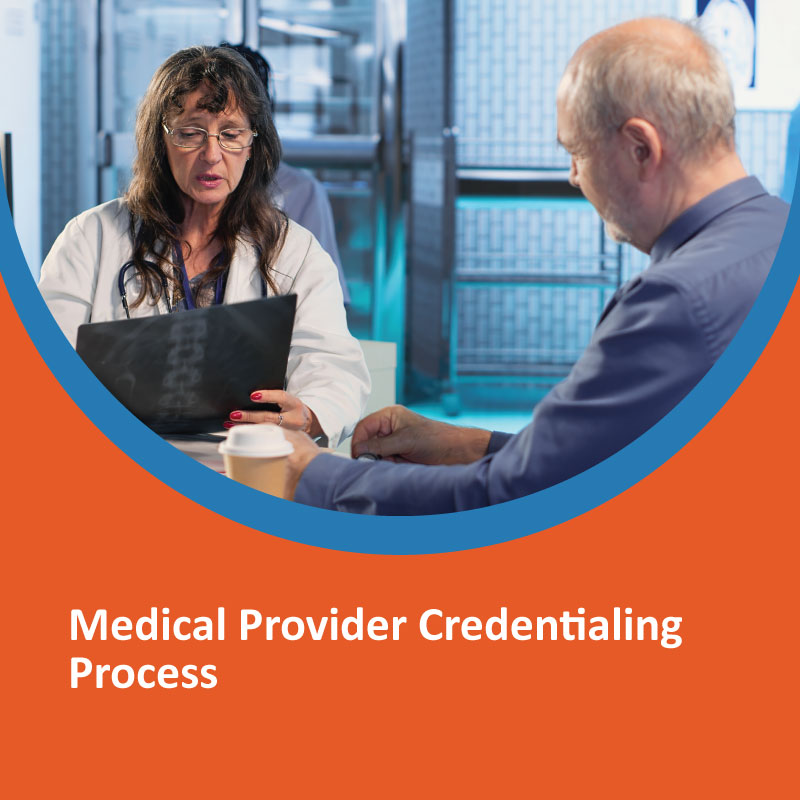The medical provider credentialing process is a necessary step in the healthcare system. It helps ensure that doctors and healthcare professionals are qualified and meet industry standards. Whether you’re a hospital, clinic, or private practice, understanding this process is important for patient safety and legal compliance.
This process verifies a provider’s education, licenses, training, work history, and more. It’s not just about paperwork—it builds trust between providers, patients, and insurance companies.
You may read: Credential Management for Medical Practices
Why Is Credentialing Important?
Credentialing protects patients and keeps healthcare systems strong. It also helps:
- Prevent fraud or malpractice
- Ensure providers meet regulatory standards
- Help facilities qualify for insurance reimbursements
- Keep patient care quality high
Without proper credentialing, a provider may not be able to practice or receive payments from insurance companies.
Steps in the Medical Provider Credentialing Process
1. Application Submission
The first step in the medical provider credentialing process is to fill out an application. This includes:
- Personal details
- Education history
- Licenses and certifications
- Work experience
- Insurance and malpractice history
Accuracy is important. Any false information can delay or stop the process.
2. Primary Source Verification
After receiving the application, the organization will verify the information. They check directly with schools, licensing boards, and past employers. This is called primary source verification.
They confirm:
- Medical degree and training
- State medical license
- DEA registration
- Board certification
- Work history
3. Credentialing Committee Review
Once verification is done, a credentialing committee reviews everything. This team decides whether to approve or deny the application. If approved, the provider becomes part of the network or facility.
4. Contracting and Privileging
In some cases, credentialing includes contracting and privileging. Contracting means signing an agreement with insurers or a hospital. Privileging means giving the provider permission to perform certain procedures at a facility.
How Long Does Credentialing Take?
The process can take 60 to 120 days, depending on how fast the provider submits documents and how quickly sources respond. Being prepared and organized can speed things up.
Common Challenges in the Credentialing Process
- Missing or incorrect documents
- Delayed responses from institutions
- Expired licenses or certifications
- Incomplete applications
To avoid delays, providers should double-check all documents and stay in contact with the credentialing team.
Who Handles Credentialing?
Credentialing can be managed by:
- Hospitals and clinics
- Third-party credentialing services
- Health insurance companies
- Medical group administrators
Many organizations now use software to manage and track the medical provider credentialing process more efficiently.
Conclusion
The medical provider credentialing process is essential for maintaining high standards in healthcare. It confirms a provider’s qualifications and protects both patients and organizations. While the process can be time-consuming, it is a vital part of running a successful medical practice.
FAQs
1. What is credentialing in healthcare?
Credentialing is the process of verifying the education, training, and experience of healthcare providers.
2. How long does the credentialing process take?
It usually takes 60–120 days, depending on how quickly documents are submitted and verified.
3. Can a provider work without being credentialed?
In most cases, no. Providers need to be credentialed to work with insurance companies or treat patients at hospitals.
4. Who needs to be credentialed?
Doctors, nurses, therapists, and other licensed healthcare professionals.
5. What happens if credentialing is denied?
The provider may not be allowed to work or bill for services until the issues are resolved and credentialing is approved.


